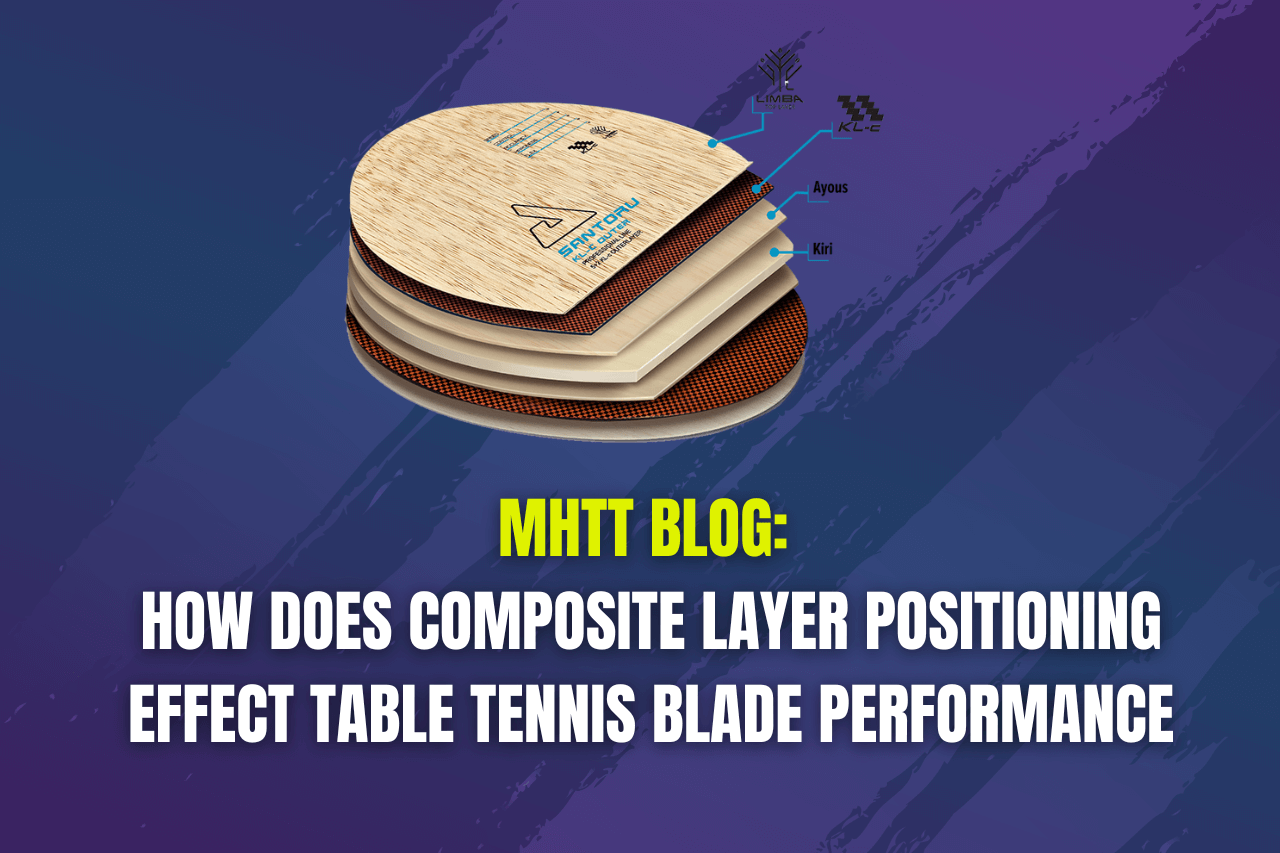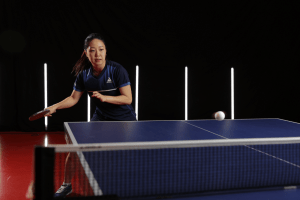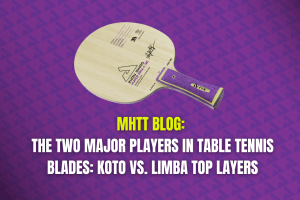At first glance many people might wonder what on earth composite layer positioning even means. It’s not as complicated as it sounds, but it certainly does have an effect on table tennis blade performance and feeling. Essentially the positioning focuses on which layer of a blade the composite materials are placed. This is separated into two groups, the classic composite placement (outer layer) and the inner layer carbon blades.
While there is essentially only one ply of difference in placement in these 7-ply blade combinations, the effect on the performance of the blade is quite noticeable.
Outer Layer Carbon Blades:
Outer layer carbon blades are those which have a composite layer directly beneath the top wood layer of the racket. In most cases the added stiffness of the composite layer can be felt more upon contact in these outer layer rackets. You certainly feel more bite from the carbon properties and get added speed in your shots.
In these blades the quality of the carbon is felt more purely and directly.
Players who like the power and pace of carbon would more likely prefer these outer layer carbon blades for their game. This could be for more power at distance, perhaps with a koto top layer like the Zhou Qihao Hyper ARY-c 90. Alternately player might prefer faster and with more flex closer to the table with limba or hinoki outers – the Santoru KL-c Outer is a prime example.
Inner Layer Carbon Blades:
The Inner Layer positioning offers more softness to carbon blades. Yes you can still achieve great speed with composites like PBO-c or KL-c, and with different wood layers on top, however you achieve more wood feeling with the carbon.
Inner Layer composites are positioning the layer above the core layer, with two plies of wood on top. The Santoru KL-c Inner blade is a perfect example.
The double wood plies on top of the composite offer a cushioning for the ball, creating optimal touch and added control while maintaining the presence of the carbon fiber properties to add extra kick.
These blades are great for players who like higher arc on the ball, more spin feeling and a lot of variance in their game, while still relying on the carbon fibers to add some sting to the ball contact. It is important to note that while these blades don’t necessarily have the same direct impact into the ball contact, they are by no means slow blades and still have great speed.
Other Elements to Consider:
Of course while there are some differences between blades based on the positioning of composite layers – there will always be many other variances depending on wood types and combinations and the different types of carbon composite and thicknesses of layers.
This hopefully serves as a general guide to give a basic understanding of what you might expect in differences between inner and outer layer composite table tennis blades.
I was using the Santoru KL-c Inner blade for a little while and recently decided to switch to something that I could get a more crisp and direct contact with, and have such changed to the Zhou Qihao Hyper ARY-c 90 blade which is an outer layer carbon blade.




